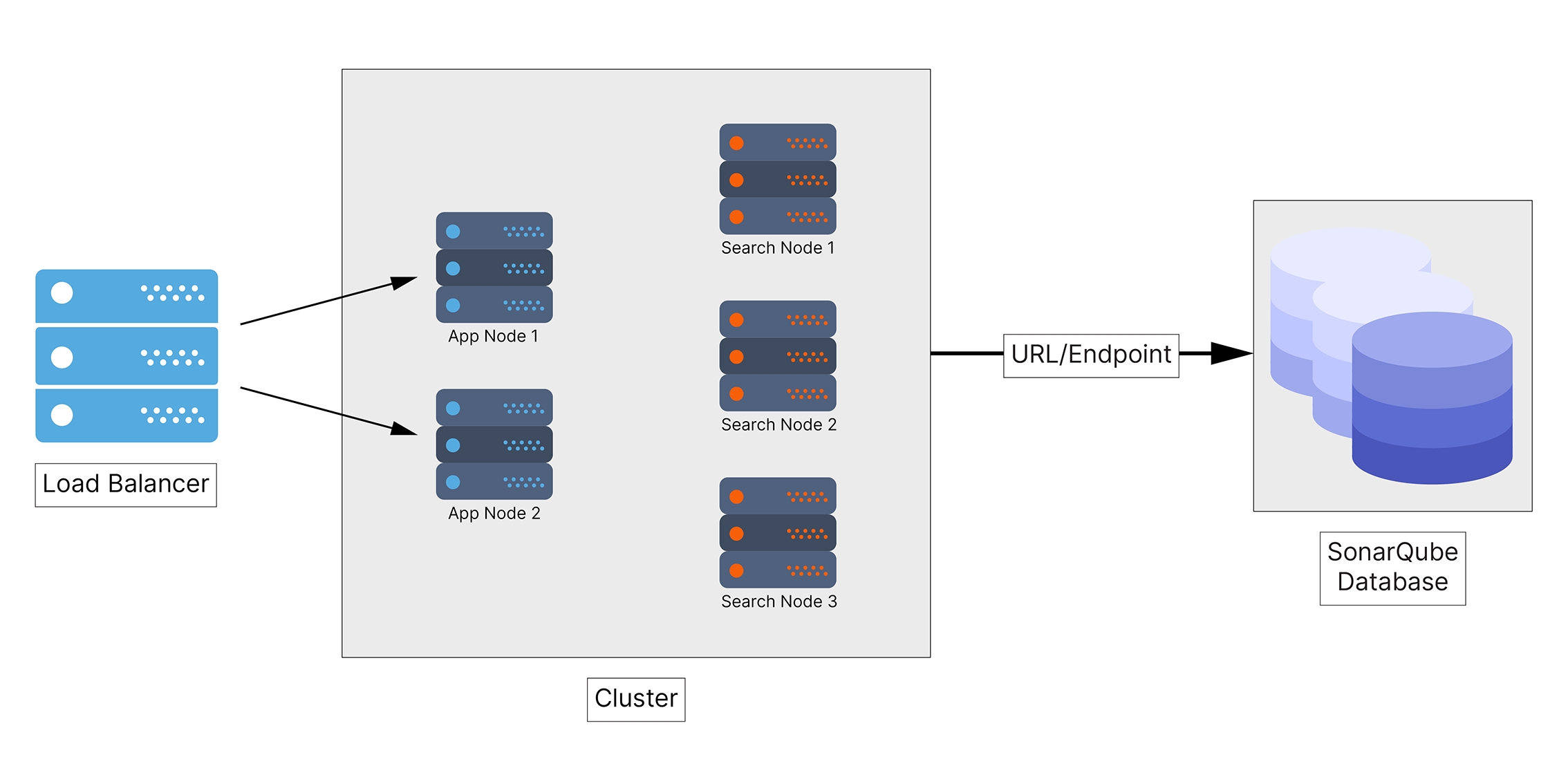DCE topology
The Data Center Edition (DCE) allows SonarQube Server to run in a clustered configuration to make it resilient to failures.
As a DCE subscriber, Sonar will assist with the setup and configuration of your cluster. Get in touch with your account manager to receive appropriate onboarding resources.
The DCE consists of:
Application nodes responsible for handling web requests from users (Web process) and handling analysis reports (Compute Engine process). You can add application nodes to increase computing capabilities.
Search nodes that host the Elasticsearch process that will store data indices. The search nodes build an Elasticsearch cluster. Unicast discovery is used in this cluster.
A reverse proxy / load balancer to load balance traffic between the two application nodes. The installing organization must supply this hardware or software component.
PostgreSQL, Oracle, or Microsoft SQL Server database server. This software must be supplied by the installing organization.

We recommend having one machine for each node to be resilient to failures. To maintain an even higher level of availability, each of your three search nodes can be located in a separate availability zone within the same region.
For more information about the SonarQube Server processes (Sonar, Web, Compute Engine, and Elasticsearch), see Server components.
Default topology
The default topology of the Data Center Edition corresponds to the minimum topology and comprises:
Two application nodes.
Three search nodes.
With this topology, one application node and one search node can be lost without impacting users. Below is a diagram of the default topology.

Related pages
Configuring network security features:
Last updated
Was this helpful?

